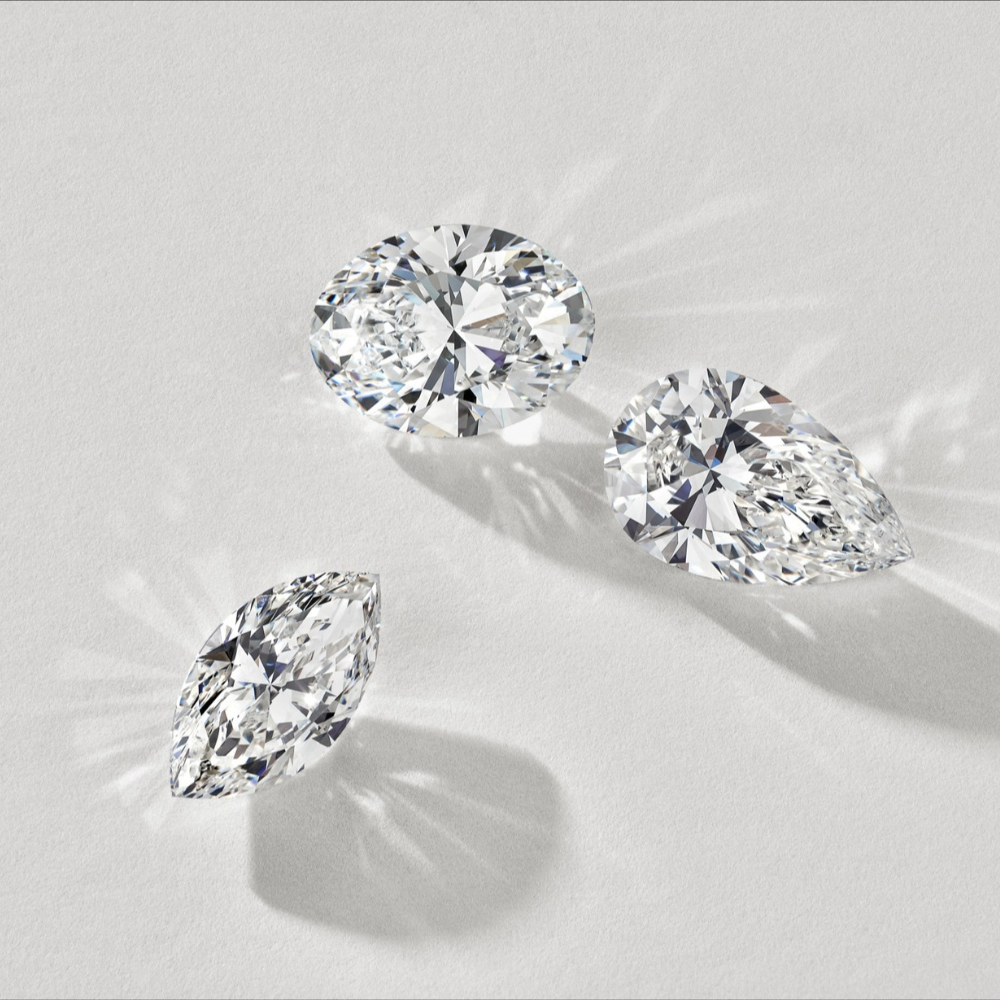
When choosing an engagement ring, many compare white sapphire and diamond to determine which is the best fit for them. Both gemstones are popular choices, but they are different in terms of appearance, durability, and price. This guide will help you make an informed decision by examining each gemstone’s characteristics.
What Is White Sapphire?
White sapphire is a colorless variety of corundum, the same mineral that gives us the more well-known blue sapphire. White sapphires occur naturally and are considered precious gemstones, but white sapphires do not have the same reputation for rarity and brilliance as diamonds. While at first glance white sapphires may resemble diamonds in appearance, they differ in brilliance, fire, and refraction. To learn more about sapphires, read our Sapphire Guide and Sapphire Color Guide.
White Sapphire vs. Diamond Engagement Rings
While both are popular choices for engagement rings and fine jewelry, their unique characteristics can make one a better fit depending on your personal preferences and budget.
Appearance & Sparkle
Both gemstones are a clear white color, but the primary difference between white sapphire and diamond lies in their brilliance and light performance. Diamonds are renowned for their exceptional sparkle, a result of their high refractive index and strong dispersion of light. This means diamonds break light into a spectrum of colors, adding vibrancy and life to the stone.
In contrast, white sapphires have a lower refractive index, resulting in less sparkle and brilliance. White sapphires emit more of a soft, muted glow. Their brilliance is often described as “lustrous” rather than “fiery,” which makes them noticeably different from diamonds under direct light.
Hardness & Durability
Diamonds score a 10 on the Mohs scale of hardness, making them the hardest natural material on Earth. White sapphires are still quite hard, ranking 9 on the Mohs scale, but they are slightly more prone to surface scratches compared to diamonds.
Price
One of the most significant differences between white sapphire versus diamond is price. Diamonds are significantly more expensive due to market demand. On average, a white sapphire costs a fraction of what a similarly sized diamond would cost.

Lab Grown White Sapphire vs. Diamond
In general, lab grown gemstones are physically and chemically identical to their natural counterparts. The process allows lab sapphires to be more affordable than natural sapphires. When comparing lab white sapphire to both natural and lab diamonds, the same appearance and durability considerations apply.
White Sapphire vs. Diamond: Can You Tell the Difference?
While white sapphires may look like diamonds from a distance, a trained eye can easily distinguish between them based on their light performance. Diamonds exhibit more brilliance and fire, which makes them stand out in different lighting conditions.
In contrast, white sapphires, while still clear and beautiful, do not have the same sparkling effect. Their light return is subtler.
White Sapphire vs. Diamond: Which Should You Choose?
Choosing between white sapphire and diamond depends on your personal preferences and priorities. If you’re looking for a stone with exceptional brilliance and durability that will stand the test of time, a diamond might be better suited for your needs. However, if you prefer a more affordable, understated white gemstone that still offers significant beauty and durability, a white sapphire may be the better fit for your needs. Whether you choose a white sapphire or a diamond, both stones make timeless, elegant engagement ring choices.
Interested in learning more about diamonds? Check out our other Diamond Guides: Diamond Cut, Diamond Clarity, Diamond Carat, Diamond Color, Diamond Shape, Lab Grown Diamonds, Moissanite vs. Diamond, Moissanite vs. Lab Diamond, Cubic Zirconia vs. Lab Diamond, How Are Lab Grown Diamonds Made?, MM to Carat






Love the work